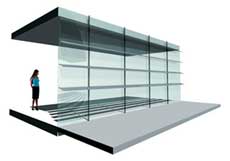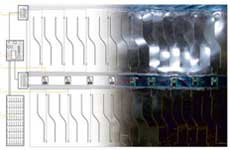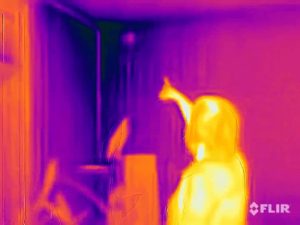Lance Hosey, of Atmo, and Soo-in Yang and David Benjamin, of the Living, are working toward a similar goal: independence from the power grid and mechanically produced energy.

Hosey’s Smart Shade employs the thermodynamics of zinc and steel to control the amount of sunlight passing into a building’s interior. Each Smart Shade blade consists of a layered composite metal. The top layer of zinc expands and contracts more readily than the steel beneath it. Contraction during cold winter months causes the blade to bend upward and to let more light in; expansion during the summer causes the blade to curve downward, shielding the interior from the sun’s rays.

Yang and Benjamin’s Living Glass uses elastic shape memory alloy (SMA) wires to control the level of carbon dioxide in a room. Their window system will sense the amount of carbon dioxide in a room through sensors and SMAs arranged horizontally on a pliable plastic window. When activated by a waft of carbon dioxide, the sensors send an electric current through the SMA wires, causing them to contract and pull open slits etched in the window. Fresh air flows inside the room until there is equilibrium with the air outside, at which time the electric current subsides, the slits close, and the SMA wires resume their original shape.
Future versions may integrate flexible solar cells and lithium ion batteries to make the system energy independent.
Via metropolis and dezain.
Related: power-aware devices.







